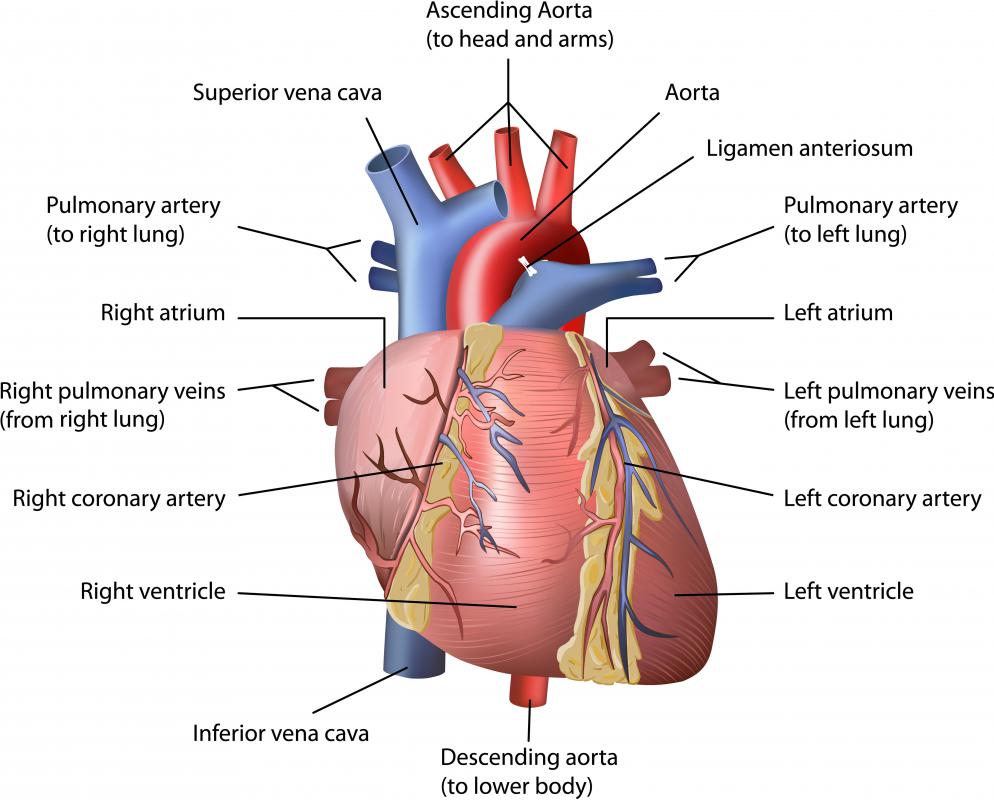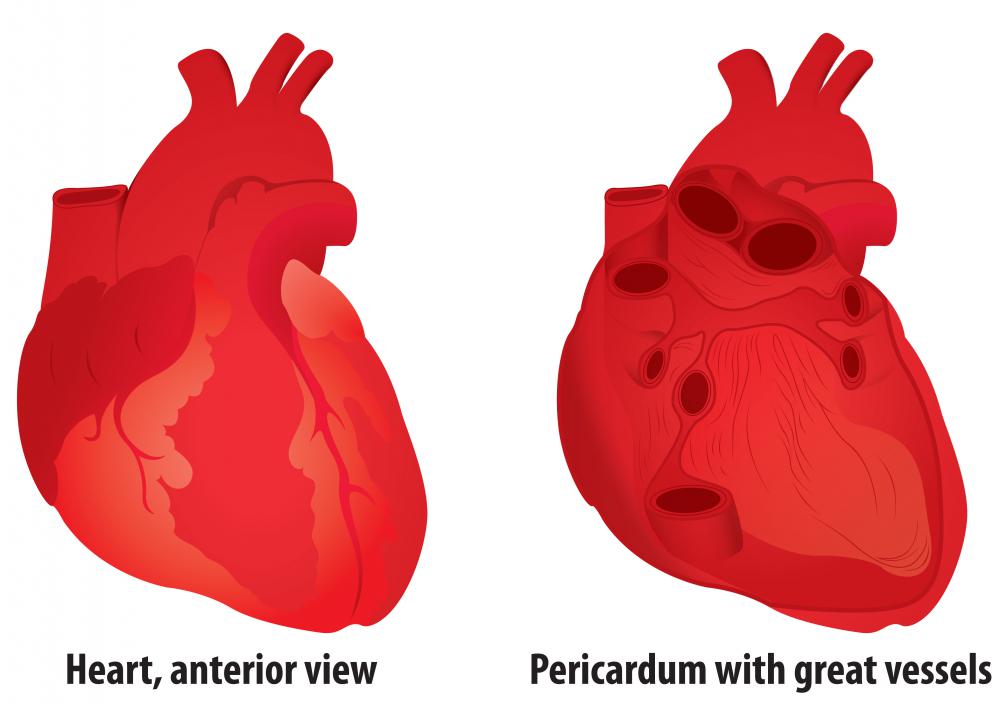At TheHealthBoard, we're committed to delivering accurate, trustworthy information. Our expert-authored content is rigorously fact-checked and sourced from credible authorities. Discover how we uphold the highest standards in providing you with reliable knowledge.
What is the Ascending Aorta?
The ascending aorta is the section of the aorta, the largest blood vessel in the body, that arises from the left ventricle of the heart. Classified as an artery, it transports blood upward and away from the heart. Once it reaches the aortic arch, which is the uppermost point of the aorta where it changes direction and becomes the descending aorta, this blood is diverted to the carotid arteries that supply blood to the head and neck, the brachiocephalic artery that supplies the head, neck, and right arm, and the subclavian arteries that supply both arms. Likewise, a large portion of this blood continues down the descending aorta for distribution in the trunk of the body. The only blood vessels that divert blood from the ascending arch are the coronary arteries, which are responsible for sending oxygen-rich blood back to the heart itself.
Roughly 5 centimeters (1.97 inches) in length, the ascending aorta is situated above the heart and behind the sternum, or breastbone, just inside of the ribcage. It originates at the heart on the top of the left ventricle, which of the four chambers of the heart is the left-most of the two bottom chambers. This point of origin is level with and just behind the costal cartilage of the third rib, which is the flexible segment connecting the rib bone to the sternum.

From here the ascending aorta travels upward, angling slightly forward and inward, so that it approaches the midline of the sternum. Nearly 2 inches above its point of origin, it abruptly changes direction. This upper, horizontal segment is the aortic arch. Externally dividing the ascending portion from the aortic arch is the pericardium, the two-walled sac that encapsulates the heart and the roots of the large blood vessels entering and exiting the heart. In other words, the ascending aorta is entirely contained within the pericardium, invisible from the outside, with the aortic arch protruding from the top.

Along the left side of the ascending aorta within the pericardium is the pulmonary artery, another large blood vessel that transports blood from the heart to the lungs to become oxygenated, or receive oxygen. To its right side is the superior vena cava, the vein that returns blood from the body to the heart via the right atrium, which lies partially behind the aorta on its right side. Behind it on its left side is the left atrium. In front of the aorta is the pericardium, and before that is a portion of the right lung, which is enclosed by the sternum and ribs.

The function of the ascending aorta is transport of oxygenated blood, which has been circulated from the lungs back to the heart via the pulmonary vein, where it is sent through the left atrium, pushed down through the left ventricle, and pumped out via the aorta for delivery to various bodily organs and tissues. Aside from bringing this blood into the aortic arch for distribution to the head, neck, and arms, the ascending aorta also diverts oxygenated blood through the coronary arteries back to the heart, where it supplies blood rich with oxygen and nutrients to the cardiac muscle — the contracting muscle of the heart wall.
AS FEATURED ON:
AS FEATURED ON:















Discuss this Article
Post your comments